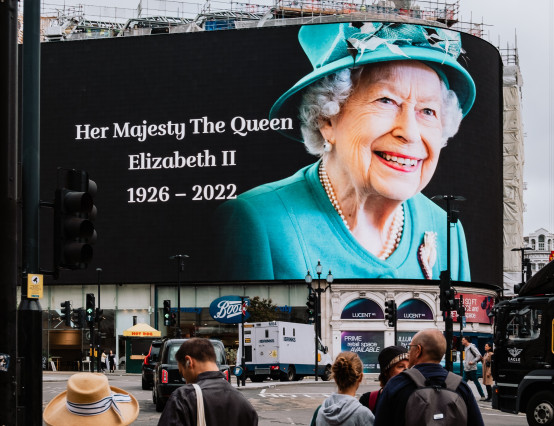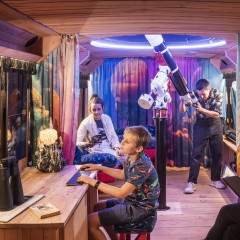Max Lilley is a young musician who works four jobs to support himself. If he could, music would be his full-time occupation, but because the cost of living is so high, Lilley has to divide his time between the music projects he is passionate about and his other jobs at a bar, coffee shop and as a driver and tour manager, which provide him with a more stable income.
In the music industry, it can sometimes take years for young artists to make a name for themselves. This forces Lilley to choose between the things he wants to do, like gigs, and the things he knows will make him enough money to pay his bills.
This conflict between working on things you are passionate about and working to make a living during these expensive times is one that has affected many people in the arts industry.
“Working in the industry and working to make an income is really tiring,” Lilley said. “Sometimes I end up spreading myself too thin, and then I get unmotivated and don’t want to create because I’m so tired.”
The arts sector was hit hard by the pandemic. Now, as the economy starts to recover and stability seems within reach, the arts face yet another threat: the rising cost of living.
Since 2021, the cost of living in the UK has increased drastically, and the effects are being felt by many across the country.
Between January and November 2021 domestic gas prices increased by 28% and domestic electricity prices by 19%. Food and non-alcoholic drink prices increased by 4.2% and could continue to rise in the coming months, according to a research briefing published by the House of Commons Library.
While the cost of living increases, wages remain stagnant. This means that people across the UK are experiencing a real-world pay cut, and as people cut back on non-essential expenditure one area that could suffer is the arts.
Gemma Harvey is an actor and writer who self-produces many of her pieces. She has experienced firsthand the effects of the increased cost of living on her work.
With less money lying around, Harvey has found herself less able to go and expose herself to works of art that could inspire her own projects and creativity. Inspiration is essential for many creatives, and when it’s too expensive to be inspired, they are less able to produce the work that sustains them financially. This forces them into a cycle that is almost impossible to break when the cost of living is so high, Harvey said.
“Producers have to charge a certain amount of money for tickets because they have to make money on their shows,” Harvey said. “But now that the cost of living has gone through the roof, can I afford to spend, say, £70 on a ticket? No I can’t.”
It’s because of this that Harvey feels theatre and the arts are becoming a luxury and privilege that only people of higher economic backgrounds can afford. As a result, whole communities, especially lower-income households, are penalised and restricted in their ability to access arts and culture.
“Unfortunately, until the arts stop being classed as a luxury, they won't be respected in the way they should be, and if the arts aren’t accessible, then it's always going to be the same people going into the arts,” Harvey said.
Esther Akpovi, who has created a brand as “the Gen-Z Cheerleader,” worries that young people who are just trying to find a career in the creative space may be discouraged and unexcited about the industry because of the increased cost of living. As a result, they may turn to a job with more financial stability but in a sector that they aren’t passionate about.
“Creatives just want to create, but now they have to think about how that job might not sustain them,” Akpovi said. “Living in a bigger city might mean access [to the arts], but you may not be able to provide for your family.”
This is such a problem because young people are the ones who will shape the future. They need to be provided with resources to educate themselves, while also having the opportunity to do what they love, which will in turn benefit the arts sector and the greater economy, Akpovi said.
Similarly, in the independent film industry, the increased cost of living combined with more complicated tax relief regulations for film investors are making it even more difficult for young people to get their big break.
According to Terry Stone, an actor, film producer and senior executive for FilmCoin, the limited support for independent films could be damaging the next generation of film producers, especially recent graduates who have loans to pay off and struggle to find a job even though they may have great qualifications from a great school.
Because the cost of living is so expensive, investors are more essential than ever to the independent film industry. But without tax relief programs ensuring that investors will see some return on the projects they fund, there is less incentive for them to invest. In turn, this could restrict the number of opportunities out there for young creatives, Stone said.
“Without independent filmmakers, you get a void of talent, and I worry the next generation won’t have the opportunity to become the next Guy Ritchie or Steven Spielberg,” Stone said.
The Solution
So, with inflation and cost of living expected to continue rising and peaking in April 2022, how do we protect young people’s access to arts and culture?
Akpovi said government policy is essential. Government funding of startups and creatives needs to be the focus to keep young people connected to the arts. Additionally, underrepresented creatives need to be kept in mind when it comes to allocating funding, as these individuals are often overlooked.
Harvey also highlighted the importance of government funding and stressed that the main way to increase young people’s access to arts and culture while the cost of living remains high is to push outreach programs in schools and communities to expose young people to the arts and encourage them to participate in them.
Outreach programs will allow young people, especially those from lower socioeconomic backgrounds, to become familiar with the arts. When cost of living is high and people have less money to spare, lower income families may not be able to afford a trip to London to take their children to the theatre occasionally.
“Outreach projects give children the opportunity to experience culture, arts and creativity,” Harvey said. “Unless you live in a city, you probably don’t have the opportunity to access these experiences.”
One example of an existing outreach program is Take It Away – an initiative introduced by Creative United. The scheme provides interest-free loans for musical instruments, equipment and software to “help to support musicians at every level” and strives to break the barriers that restrict participation in arts and culture.
Mary-Alice Stack, Chief Executive of Creative United, said that during the height of the pandemic, Take It Away saw an upsurge in the number of people learning musical instruments.
Now, as the economy reopens and the cost of living rises, some of these people may find themselves with less disposable income. As a result, Stack said the organisation is likely to see more people seeking out loan finance to buy art and instruments.
Additionally, Stack said the arts sector is currently in a precarious position, with the economy reopening post-pandemic at the same time as the cost of living is rising. This means that even though the arts sector is opening again, the increased cost of living could continue to prevent young people from fully participating in the arts in the way they may have been able to pre-pandemic.
Another organisation, Arts Council England, offers grants and funding for creative sectors and has seen an increase in the amount of funding it provides.
In its National Data Survey, Arts Council England reported that between 2019/20 and 2020/21, total subsidies given to all participating National Portfolio Organisations increased. This money went from making up 22.1% of these organisations’ income to 36.9%, as income generated by organisations themselves decreased during the same period.
While the data does show an increase in arts funding, we cannot know if this is directly tied to the increased cost of living. The Covid-19 pandemic has had a huge impact on the arts sector, as lockdowns made most arts activity unfeasible, and additional funding was provided to help struggling organisations. This is not to say that the cost of living did not have an impact on the need for increased arts funding, but the pandemic seems to be the main factor controlling the available data.
However, one thing remains clear; young artists and creatives need to be supported now more than ever so they can continue to create and do what they love without fearing they won’t make enough money to support themselves and their families.








0 Comments